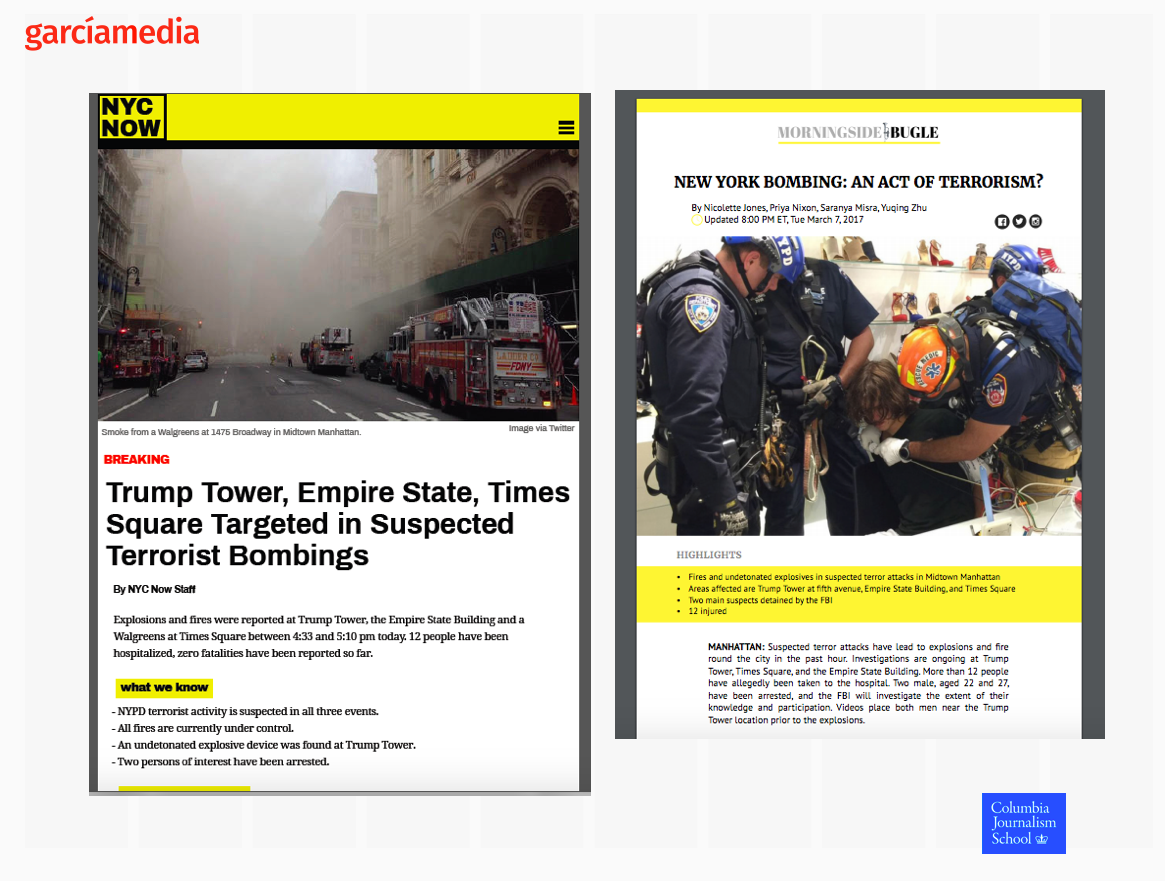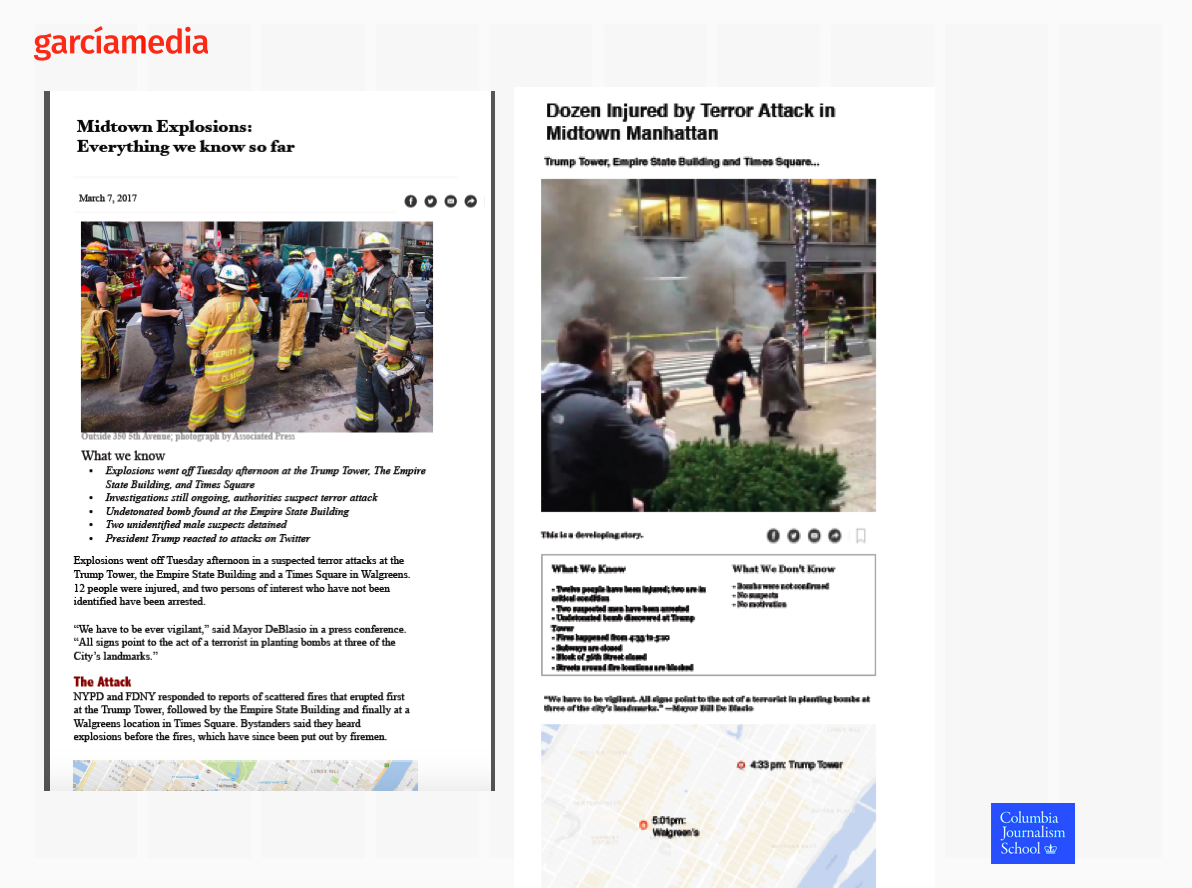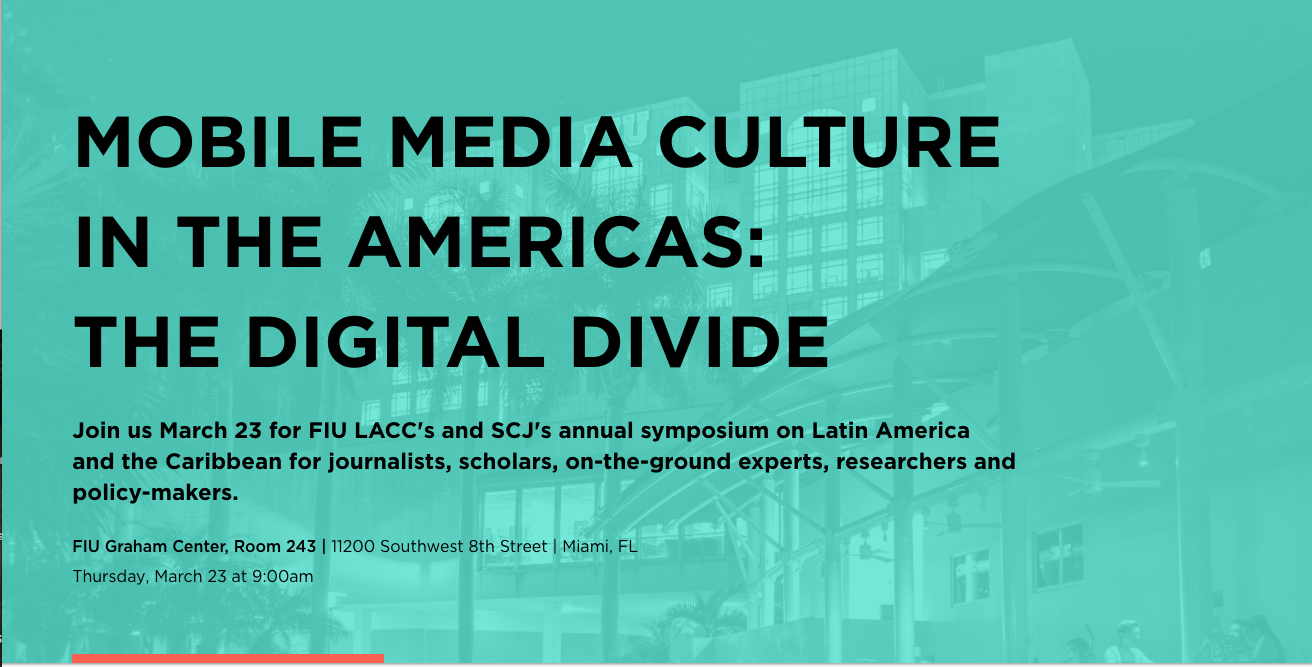Readers of my blog know that we are advocates of writing/designing for the specifics of each platform—what works for mobile is not necessarily functional for print, for example.
So we have emphasized linear thinking for mobile platforms where we scroll to get more information. Results of recent findings also tell us that scrolling is in and clicking not as preferred. We have devoted various blog posts to the idea of linear thinking where narrative/text and visual assets mix.
A model that we suggested to the students for this exercise was the well crafted example of linear visual storytelling that The New York Times followed when covering the Orlando shooting.
The midterm assignment
For our students in my class Multiplatform Design & Storytelling, a graduate level course at Columbia University’s School of Journalism, my teaching assistant, Andy Rossback, and I, came up with a breaking news event of our creation that the students would cover, with updates coming at them from time to time during the course of the 3-hour exercise.
The simulated event centered on a series of fires and explosions around Midtown Manhattan.
Students worked in groups of four, to include an editor, a writer, a designer and a copy editor. While the information was the same for each group, it was up to the students to come up with visual ideas and the assets to present them.
Here are the results


See the complete scroll of each project below:
-Danya,Yassaman,Selin,Guanhong
Speaking Engagements Coming Up
I will be speaking at these events in the weeks ahead:

Mobile Media Culture in the Americas: The Digital Divide
March 23
Miami, Florida
USA
I will be one of the speakers/panelists in this conference, a full day of interactive analysis of how information and communication technologies—specifically, mobile media—affect Latin American and Caribbean societies. How are mobile media bridging divides? Is that bridge strengthening democracy, social mobility, and economic equality and supporting growth and development? How has innovation changed the newsroom and news media landscape in Latin America and the Caribbean? What is being done to support enhanced journalistic coverage of our hemisphere?
For more information: https://mmca17.splashthat.com/
Webinar for Crowdynews: open to all
March 29, 9 a.m. EST
The brief: What trends should every publisher embrace in 2017? According to Dr. Mario Garcia, top-of-mind should include digital storytelling, email newsletters, and sponsored content.
“Mario Garcia, world renown storyteller, editorial designer, and digital strategy consultant, will share practical steps news organizations can embrace to offset the disruptive forces rocking the news industry. During this 60-minute webinar, Mario will introduce a concept and then open the floor for a discussion on implementation and best practices sharing stories of those who are realizing success.”
In this webinar, Dr. Garcia will cover how to:
1) Go where your readers are: mobile. How do you create a more visually compelling and interactive experience for your mobile users while facing the challenge of a smaller screen size?
2) Be the source of their news – starting with their inbox every morning. How do you create a personalised, informative, and indispensable newsletter for your audience?
3) Serve your readers with high quality, non-obstructive ads or face ad blockers. How do you organize your newsroom to offer sponsored content while not compromising editorial integrity?
To register, go here:
https://attendee.gotowebinar.com/register/5146625194690261761
VOZ Media Conference
April 6
Vienna, Austria
I will be the keynote speaker for this event, my presentation titled The important role of print in the digital age. This presentation presents a state of the media today, with emphasis on how we tell stories visually on mobile devices, the role of print and the importance of email newsletters and sponsored content to find new ways of promoting content and monetizing your operation.
For more information: http://www.voez.at/b2039m10